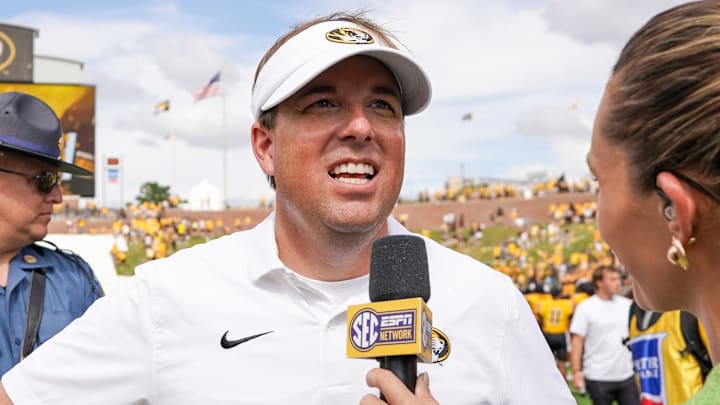Missouri head coach Eli Drinkwitz is all for expanding the College Football Playoff, but in his opinion, it can't just be a few teams. For Drinkwitz, if you are going to expand it, you need to really expand it. Take the field from 12 to 30, with conferences having play-in games to get in. This model would allow more fan bases to be engaged, more conferences to be heavily involved, and the results to be more determined on the field than in the hands of committees.
The model sounds very far-fetched at first blush, but the more you let Drinkwitz state his case, the more it starts to intrigue, and truly, he may be on to something here with this idea.
Drinkwitz's solution to the playoff expansion is 30 teams and conferences with play-in games
His logic is that if the Big Ten and the SEC each have four bids into the 12-team playoff, but the conferences or the NCAA make it so you have to play-in to those games. That allows the top eight teams to compete. Here's how he explained it at SEC Media Days:
"“My math could be wrong here but, if we did the 12, okay, and you had four automatic qualifiers? Everybody thinks that’s limiting. It’s not limiting if you think about it from, you take those four automatic qualifiers and you divide that into eight opportunities, of eight play-in games. Now you’re thinking, the SEC is playing in for eight, the Big Ten is playing in for eight. Since we’ve expanded the bubble to 16, give three to the Big 12, three to the ACC, one, one.”"Eli Drinkwitz
He later goes on to explain to J.D. PicKell of On3.com that if the model is supposed to resemble the NFL, the number of teams isn't even close. Drinkwitz says the NFL takes 44% of its teams to the playoffs. "If we’re talking about 12? That’s 9%. If we’re talking about 14? That’s 11%. If we’re talking about 16? That’s 12%...So, I really don’t understand what the big fight is about."
Ultimately, he said the game is all about the players and the fans. It's for them, not for the coaches or administrators. The College Football Playoff needs to be built for the players and fans. This model of 30 teams allows 30 fan bases and 30 teams to feel like they have a chance to win it all and be engaged. It also allows a team that had a few bumps in a hard conference to still find a way in.
It's a bit of an outlandish number, considering 30, but his theory really revolves around 12 teams in the bracket and 30 teams trying to become those 12 teams. When you put it that way, it's not at all far-fetched, and it makes a lot of sense.
